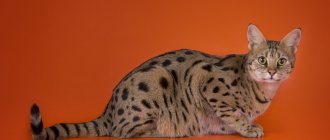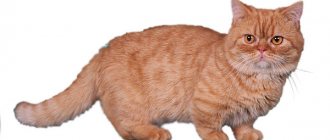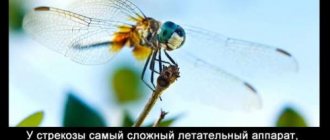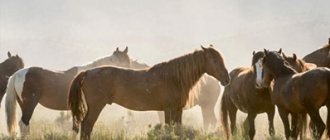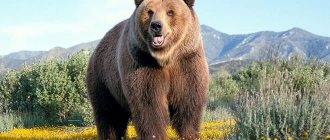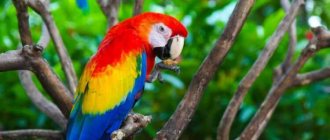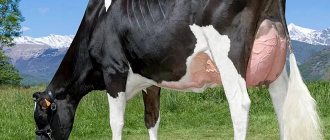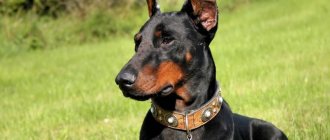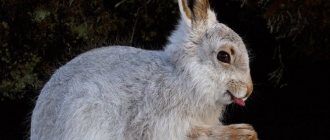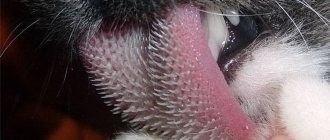Chocolate color belongs to the group of artificial ones, so it is rarely found in cats of native breeds. Scientists have just begun to understand the influence of coat color on the character of an animal. However, owners have long noticed one feature - a brown cat is much less likely to show an obstinate disposition and oppose itself to others.
Let's find out how else animals with chocolate fur differ from other representatives of the cat family.
Features of color
The formation of color is a complex biochemical process that begins in the embryonic stage of embryonic development. The color of a future kitten's fur depends on the interaction of dozens of genes.
- Chocolate color is one of the forms of black, for which the B gene (black) is responsible. In combination bb it gives the color range of a brown monochrome, capable of taking on different tones.
- Next, the D gene enters the process. In the dominant form, it blocks any lightening, but in the recessive version, dd opens the way for a change in the color of the main pigment.
- The bb (brown) allele and the dominant D gene are chocolate color. When the combination bb+dd occurs, the coat lightens and turns purple.
- Black always dominates brown.
- Within colors there are also divisions into tones. Dark chocolate is formed by the b allele, and the lighter cinnamon (cinnamon) received the b index
- Option b partially suppresses b1, making color fixing a very difficult task. Therefore, kittens change color over time, and only in an adult animal can one accurately determine the color of the coat.
- In nature, cats have two coloring pigments - black eumelanin and red pheomelanin. But the first one has two additions - brown (dark chocolate) and cinnamon (cinnamon color). The color saturation of the hair is affected by the shape of the dye capsules and the density of their arrangement in each hair.
Experienced breeders always accurately determine what colors cats will have in their litter. Brown color is considered rare and complex, but in some cases it predictably appears when breeding chocolate cats.
This is interesting! Once upon a time, felinologists tried to get brown offspring from red (ginger) cats. But the experiments had to be stopped due to unstable results. Only some varieties of black cats give birth to chocolate babies.
Devon Rex
These long-eared cats are more reminiscent of fairy-tale elves. Their story begins in the middle of the 20th century. It was then that people living near one of the English mines accidentally found an unusual cat with curly fur, which became the ancestor of a new breed.
These are large, muscular animals with a broad chest, thin legs and a long tail. On the large head of the Devon Rex there are huge ears that look like locators, and expressive elongated eyes. The entire body of representatives of this breed is covered with soft, dense hair with wavy curls. The most common cats are white, honey, black, lilac and brown.
They all have an active, energetic character. They love outdoor games and love to jump on high cabinets.
The most popular breeds of brown cats
Among all breeding groups, there are a sufficient number of animals with brown fur. But there are very few breeds where color is present as the main one and at the same time is steadily passed on from generation to generation. For example, the brown color of Yorkie cats. Their chocolate coat color is inherited and is even enshrined in their name. These cats are not widespread, although they were recognized by the largest international association WCF.
Abyssinian
Descendant of ancient indigenous breeds from Africa and Southeast Asia. Only 4 colors are officially registered, including the red-brown sorrel. A stripe of a rich shade of the main color is allowed along the line of the spine, and the root part of the hair and undercoat are in the color of a delicate apricot.
Abyssinians gave their name to a separate group of ticked colors that were later introduced into other breeds.
Havana
Havana Brown is a very active, active and sociable cat. The breed is more than a century old, and it differs from others precisely in its brown color. Sometimes it “goes” into red shades or gets a pinkish tint. Some brown kittens are born with a residual tabby pattern, but this should completely disappear by the age of one year.
Burmanskaya
It is known that the breed was formed as a result of crossing Siamese cats with animals brought from Burma. Later the population was divided into two directions: American and European.
The former have rounded shapes and are similar to local short-haired cats. The appearance of the second, European ones, is similar to the Siamese group.
The coat is in brown-chocolate shades, very thick, soft and short.
This is interesting! Burmese cats hold the record for fertility. In 1970, a litter of 19 kittens was registered in England.
Devon Rex
Short-haired curly representative from Great Britain. His breed line began in the 60s, and later breeders were able to consolidate the unusual appearance in the offspring - curly hair, huge ears, a slightly curved nose and mustaches twisted into a thin spiral.
Brown cats are rare in the Devon Rex breed - color is not one of the priorities of this group; any combination of shades is allowed.
British
One of the most famous shorthaired cats of old England, she became the ancestor of several other breeds. The British belong to the category of large cats with characteristic external features:
- rounded shapes;
- heavy frame;
- short coat with a plush texture.
A British cat of chocolate (brown) color is rare - more than 200 colors are allowed in the breed, and the main one is a gray-blue shade. But there are specialized nurseries that deal only with brown cats.
Scottish lop-eared
A representative of the British subspecies with a characteristic mutation of the auricle. The tips of the ears are curved forward, which gives the Scots an unusual appearance. For some time they were even considered a variation of the parent English group, but were later separated into a separate category.
The standard allows about 200 color combinations, including chocolate, cinnamon, and brown.
British and Scottish brown
Chocolate Persian
Iranian cats are among the oldest domesticated cats and are notable for their inability to live in the wild or outdoors. Brown color in these animals is allowed and even recorded in the breed standards, but it is found in solid form only sometimes.
Much more often you can see a color-point chocolate mask, which came into fashion at the end of the last century.
Persians also stand out from other breeds due to two difficulties:
- Grooming. It is long, fine in texture, with a thick undercoat and, if handled carelessly, very quickly becomes tangled.
- The flattened nose has led to a deformed septum, causing Persians to snore. The eyes of Persian cats often water, this is due to the structural features of the skull.
Chocolate exotic
The exotic was bred from an interbreed mixture of American Shorthair and Persian cats. He took the appearance from his eastern ancestors, but the fur remained short, which greatly facilitates its care and general hygiene.
To consolidate the necessary qualities, the Burmese and Russian Blue cats were additionally included in the breeding strategy. But later, when the group became numerous, priority was given only to representatives of the Persians.
Chocolate, cinnamon and brown are not considered a surprise in this community. To transfer color genes, exotic cats are traditionally used in matings with other cat species.
Havana brown
This is a relatively young breed that appeared in Europe in the 19th century. Great Britain is considered its homeland. Local breeders decided to breed an animal whose body would be covered with chocolate-colored fur. To do this, they crossed representatives of several different breeds, including Russian Blue, brown Siamese and domestic black cats. In the 50s of the 20th century, these animals were brought to America. A few years later they were officially recognized as an independent breed.
Havana Browns are charming brown cats with a playful disposition and a gentle voice. Their weight ranges from 4-6.5 kilograms. The elongated head has raised whisker pads, bright green eyes and forward-leaning ears. The animal has a strong, muscular body with soft, shiny fur, the color of which varies from red-brown to warm chocolate.
How to choose a kitten
In the brown cat breed groups, there is a little secret to establishing the color. The fur of kittens after birth cannot serve as a guide to their actual appearance. Most often it fades (by 6 months of age) and only then the main shade becomes clear.
In some cases it is lightened, in others it is darkened. Sometimes the birth color appears gray, but by the time they reach sexual maturity it completely changes to brown or chocolate.
Even if the kitten was purchased from a nursery with a good reputation, this will not give full confidence in the color stability. During its life, a cat will change its basic tone several times, and by old age it will probably become darker and more saturated.
The character of a chocolate Briton
Chocolate Britons have an aristocratic disposition. They love freedom and have self-esteem. There is a certain detachment in the character of animals. A Briton can become an affectionate pet if you raise him from the first days of his life. Well-mannered cats and cats are calm and friendly. They are affectionate towards familiar people and love to play with children.
At the same time, British cats remain unobtrusive and can spend time alone. Owners can leave representatives of the breed at home when they go on vacation. A temporary move to another home will be more stressful for the animal than living alone.
But if the owners are not at home for several months, the cat will become weaned from the owners and may not recognize them when they meet. When leaving your pet at home during the holidays, make sure that someone visits him once every 1-2 days.
Representatives of the British breed are curious. They want to know everything that is happening in the house. Owners should hide valuables to protect them from the teeth and claws of a pet. Over time, adults become phlegmatic and lose interest in research.
Content Rules
Brown wool does not require special care. Short-haired cats are combed once a week with a special comb or mitten. During active molting, the procedure is repeated daily. Long-haired cats are more picky about hygiene. They need to be brushed 2-3 times a week, and during the molting period - several times a day.
The diet of chocolate-colored cats should include foods containing trace elements of copper or seaweed. But you need to control the portion size, because excessive consumption of seafood gives the coat a red or yellowish tint.
A cat with a rare brown color is a claim to extravagance and originality. Only a few European nurseries work with this group. It is noteworthy that chocolate cats are sociable and willingly parade in public. And the owner, in addition to communicating with an animal of a rare color, receives aesthetic pleasure from the success of his pet. Decent payment for the effort and time spent on keeping a cat.
Chantilly-Tiffany
This is a relatively rare breed that received official recognition in 1979. Chantilly Tiffanys are slender, graceful cats with a wedge-shaped head, bright eyes and wide-set round ears. The entire body of these animals is covered with elegant, silky fur, completely devoid of undercoat. As for color, previously these were exclusively brown cats. But the modern standard allows for the presence of lilac, blue or spotted-striped skins.
These playful and friendly animals quickly become attached to their owners. At the same time, they do not require constant attention and complex specific care. Chantilly Tiffanys often purr in a quiet, gentle voice, reminiscent of a dove's coo.
Turkish Angora
How strong are the stereotypes! This elegant medium-sized cat, with long legs, a wedge-shaped head, very soft thin fur and a long fluffy tail, is associated only with a white fur coat. However, standards allow different colors, including black.
The Turkish Angora is one of the oldest cat breeds, almost extinct in the middle of the last century. There were various reasons for this, including the enormous popularity of the Persians. But enthusiasts were able to restore the breed, and now it is the national pride of Turkey.
Norwegian forest
A stern-looking, large, muscular cat with thick and long hair is a success and the pride of Norwegian breeders. The ancestors of the breed are inhabitants of the Scandinavian Peninsula, healthy and hardy animals. Therefore, Norwegians can be called one of the healthiest cats. Breed standards allow many of the existing colors, including black.
Signs about black cats
A black cat crossing the road is a harbinger of bad luck. This belief is actively circulating by word of mouth in the post-Soviet space, some European countries and the USA. But for a resident of Great Britain and Japan, this portends a good sign and unexpected joy. If you still believe in folk omens, if you meet a black cat on the road, spit three times over your left shoulder or grab a button.
The British believe that a black cat protects a person’s home from thieves, and also helps single women find their soulmate.
A cat sitting on the threshold needs to be let into the house and warmed up - in gratitude it will attract wealth and peace into the house. The animal cannot be driven away. In any case, such behavior characterizes a person from the bad side.
If a cat gives birth to red and black kittens, according to popular belief, it is better to place the red one in good hands, and leave the black one in the house for good luck.
If a black cat sneezed not far from the bride, it means the marriage will be happy.
In ancient times, black cats were kept in temples and were considered amulets.
This is interesting! In the Middle Ages they believed that a cat was an enchanted witch. Women who dared to have a black animal were burned at the stake.
The Chinese, on the contrary, warded off evil spirits with the help of cats.
Scandinavian fishermen took fluffy animals on boats, thereby insuring themselves against storms.
The Slavs were not afraid of pitch-black cats, but, on the contrary, attracted them to their homes. The mustaches quickly caught mice.
As you can see, there are not so few good omens. What to believe is the choice of each of you. The main thing is not to forget that animals should not suffer from prejudice, because kushki do not spread negative energy and do not wish harm to anyone.
Persian
Persians are the embodiment of luxury. They have a heavy skeleton, a “trademark” head with a convex forehead and a stop on the bridge of the nose, large round eyes and a simply angelic, “sweet” expression on the muzzle (by the way, a completely official term). The Persian fur coat evokes surprise and admiration, because representatives of other breeds do not have such long and thick fur. Despite the difficulties in caring for a Persian pet that needs to be thoroughly combed every day, this breed has long been at the top of the list of the most popular. Perhaps the meek disposition gained the Persians a lot of fans.
The breed has been actively developing for many decades. So active that now the appearance of Persians is very different from the usual appearance of a mongrel cat. Selection has had a bad effect on their health: they are the leaders in the number of breed-specific diseases.
Canadian Sphynx
It is difficult to imagine that the Sphinx would not attract attention, although not always enthusiastic. But the unpleasant impression immediately disappears as soon as a person strokes it or picks it up. These cats have a very pleasant to the touch, like suede skin, covered with barely noticeable fluff. Sphynxes are cats of medium size and build, quite heavy.
Their history was very complicated, although it began in the same way as all breeds based on random mutations. At the very beginning of breeding (the 60s of the last century in Canada), breeders could not fix the desired trait due to a lack of knowledge and experience. The breed received a second chance in the 70s, when two more outbred hairless cats were discovered in the United States. Sphynx breeders work a lot on the type of animal and the quality of the skin, but its color does not matter.
Rare colors (unrecognized colors)
Many felinological systems still do not recognize several specific Bengal colors, in particular, charcoal (charcoal), blue and melanistic (black).
Carbonic
The Charcoal Bengal (Apb or Apb, Apb color genes) is darker than the recognized colors. The black, smoky charcoal color was especially noticeable in the early generations of F1 and F2 Bengals. The Charkoal trait is inherited regardless of the color of the animal and can be exhibited in each color class: brown, silver, snow (Lynx charkoal, Mink charkoal, Sepia charkoal) and blue.
Charcoal Bengals are distinguished by a dark gray or black (charcoal) background with small, very dark spotted or marbling patterns, which should never be red. (4) The Charkoal may also have a darker mask on its face and a thick stripe, commonly called the "Zorro mask" - which resembles an upside-down Y.
This mask can be very dark, the same color as the black body markings. The tail of such a cat is dark brown, black or gray-black with stripes and a black tip.
Blue
Blue color (d, d diluted genes) is perhaps the rarest among Bengal colors. Since the gene responsible for this color is recessive, a blue Bengal cat can only be born from a pair in which both parents carry a blue color in the genotype.
Some breeders are making every effort to try to promote this undoubtedly beautiful variation of Bengals to recognition, and today this color is already recognized by two systems - CFA and WOC.
Blue Bengal cats are distinguished by their gray-blue color with the presence of cream tones. Mottled or marbled pattern - dark blue or metallic grey. The base coat color of the Blue Bengal is pale bluish-gray to gray-blue with markings ranging from medium blue to dark blue. As a general rule, the base color and markings should contrast markedly with each other. Warm fawn tones may be present on the cat's face, back and legs. The underside and chest are a lighter shade from the main body color, as are the areas around the eyes, temples and muzzle. The pigment around the eyes and lips is dark blue. The skin of the nose is pink, with a dark blue outline. Paw pads are eggplant color (purple). Eye color can be any, except blue. (3)
Black
The term "melanistic" when describing cats means "solid color." The melanistic Bengal cat has visible markings along the body: this is commonly called the “ghost tabby color”. The black (melanistic) Bengal cat (color genes a, a) actually has black patterns on a black background that are reminiscent of the melanistic color variant of leopards and jaguars - the legendary black panther.
The melanistic Bengal's background and pattern colors are the same, ranging from dark brown to black, and their patterns are subtle and are commonly referred to as "ghost markings" or "ghost spots." But the pattern can still be seen in daylight - like on a black panther. The pattern is also more noticeable in kittens.
Black Bengals are extremely rare and less popular among breeders because these color variations are not recognized by most feline systems.
It is also worth noting the smoky Bengal - this is a silver variation of the melanistic color.
Japanese Bobtail
An amazing breed, because its representatives have a very short tail, which can be in the shape of a ball, a hook, or straight. It should not grow more than 12-15 centimeters in length.
They can be of a wide variety of colors: black, white, tortoiseshell, marble. Cats are snow-white with small spots of black, red or gray.
Interestingly, to get healthy kittens, it is necessary to cross a short-tailed or tailless cat with the owner of a regular long tail. Otherwise, the offspring will be sick or will not survive.
Cats are smart and playful. They have a thirst for research, so they can explore new territories for a long time. Very talkative, they make a wide variety of sounds. Families with children can have them, since cats are not at all aggressive, willingly communicate and accept new members into their “pack”.
Maine Coon
It is impossible to pass by the Maine Coon indifferent: he has a very large, long, muscular body, powerful paws, a huge tail, signature tassels on his ears, and of course, a unique box-like face. In general, the “correct” Maine Coon is the correct body and massiveness, and only then the color. Therefore, breed standards allow many colors (although not all), including black.
American Bobtail
Their tail is no more than 2.5-8 centimeters long. This short-tailed breed was bred by American breeders. Weight does not exceed 7 kg. Cats are smart and can be trained. They enjoy long walks with their owner. They can hardly stand loneliness, so they welcome any company. These cats need a lot of time.
The most popular color is tabby. These are darker markings in the form of medallions and stripes. But there are different shades of black: coal-black, ash-black, black-brown.
Scottish lop-eared
How unusual a cat's head without ears looks! More precisely, with ears, but small and tightly pressed to the head. The charming muzzle with round eyes gives the Scots a resemblance to owlets. Representatives of this breed are of medium size, have a fairly dense build, and thick fur - like their ancestors, the British and American Shorthairs. Well, since the feature of the breed and the main concern of the breeders are ears that meet the standards, the color is not important (any color is allowed).
The unique Scottish ears are a manifestation of a random mutation discovered in an ordinary cat on a farm in Scotland in the 60s of the last century. British breeders immediately became interested in the mutation. It soon became clear that the descendants of fold-eared cats have serious health problems. In Great Britain, breeding work was prohibited. But the “owls” attracted not only the British. US breeders have found that kittens will be born completely healthy if one of the parents has normal ears. Therefore, among Scots, about half have normal ears.
Laperm
The same applies to cats with curly hair. The standard allows any color, including black. The cats have a gorgeous fluffy tail and a collar around their neck. The wool is twisted in a spiral.
The cats are very friendly and sociable. They get bored alone. They require regular walks. The hallmark is curiosity.
Siberian
This is a Russian breed that easily tolerates cold and frost, is easy to keep, and is excellent at hunting rodents. Siberians have a water-repellent coat, a thick double undercoat, and a chic fluffy tail.
Black representatives of the breed are very beautiful, they have beautiful eyes with light rims. White Siberian cats often have blue eyes, but sometimes this is a sign that the cat is deaf.
Siberian cats are smart and highly trainable. They can learn several tricks for a tasty treat. They are trainable and quite capable of obeying certain commands. They love the family in which they live, including small children, but they do not favor strangers and are ready to protect the owners from guests, thereby showing their distrust.
British Shorthair
A cat with a “rich” appearance - this is how the British can be described in a nutshell. Heavy bones, excellent proportions, a cheeky round head with small ears, huge eyes of a necessarily bright color, a dense coat - so dense that the hairs are located perpendicular to the skin. The Briton is magnificent in any color! True, there are not so many black British: under the influence of fashion and notorious advertising, fans of the breed prefer the “classics” - blue or silver animals.
This breed is the glory and pride of British breeders; for many decades it has been in the TOP 10 most popular in the world.
"Fragrant" nicknames
An original solution is to give the four-legged pet a name that is consonant with the name of a classic or fashionable modern fragrance. You can also “imprint” the name of a perfumery and cosmetics brand in your nickname.
- Azzurra;
- Guerlain;
- Dolce Vita;
- Dolce;
- Givenchy;
- Zhador;
- Cacharel;
- Klima;
- Kenzo;
- Lancome;
- Mugler;
- Noah;
- Opium;
- Poison;
- Sparklin;
- Trezor;
- Tuberose;
- Chance;
- Chanel;
- Ermes;
- Angel;
- Herrera.
"Scottish" nicknamed Chanel
Bombay
This is perhaps the only breed whose standard allows exclusively black coat color, and the rest are considered defective. Cats appeared in the USA in the 50s of the 20th century.
The breeder was trying to get a black cat that would look like a panther. These predators live in the vicinity of Bombay, hence the name. Characteristic external features are a neat head, paws, and an elongated graceful body. Eye color changes with age: from gray and blue in kittens to amber in adults.
Bombay cats get along well with children, they are ready to communicate a lot with the owner, but do not bother him with meowing. Friendliness is the hallmark of these little panthers.
English names
Sweet-sounding and beautiful nicknames of English origin are popular among all pet lovers. They “look” very gracefully on representatives of the cat family and are perfect for chocolate beauties and beauties.
Male names:
- Archie;
- Billy;
- Benny;
- Bean;
- Binks;
- Buddy;
- Brian;
- Brighton;
- Dave;
- Dick;
- John;
- Joel;
- Jas;
- James;
- Zach;
- Ethan;
- Kevin;
- Clyde;
- Clark;
- Lionell;
- Michael;
- Marilyn;
- Matt;
- Matthew;
- Murphy;
- Nick;
- Austin;
- Ozzy;
- Pipe;
- Floor;
- Peter;
- Randall;
- Rick;
- Ron;
- Steve;
- Sam;
- Tim;
- Volume;
- Walt;
- Frank;
- Harley;
- Chase;
- Chuck;
- Eddie;
- Angel.
Female names:
- Andi;
- Iris;
- Becky;
- Brittany;
- Barbie;
- Wendy;
- Winona;
- Valley;
- Gabby;
- Grace;
- Dolly;
- Deyzhi;
- Jodie;
- Zoe;
- Kelly;
- Kylie;
- Catherine;
- Kitty;
- Katie;
- Lizzie;
- Lisa;
- Meryl;
- Mandy;
- Miley;
- Maggie;
- Nora;
- Paris;
- Priestley;
- Singing;
- Polly;
- Prudence;
- Reese;
- Riley;
- Rand;
- Sally;
- Sue;
- Sadie;
- Tera;
- Trixie;
- Trisha;
- Tyra;
- Franny;
- Phoebe;
- Heidi;
- Hayley;Cheryl;
- Shannon;
- Sharon;
- Ashley;
- Emily;
- Ellie;
- Andrea.
Young Prudence
